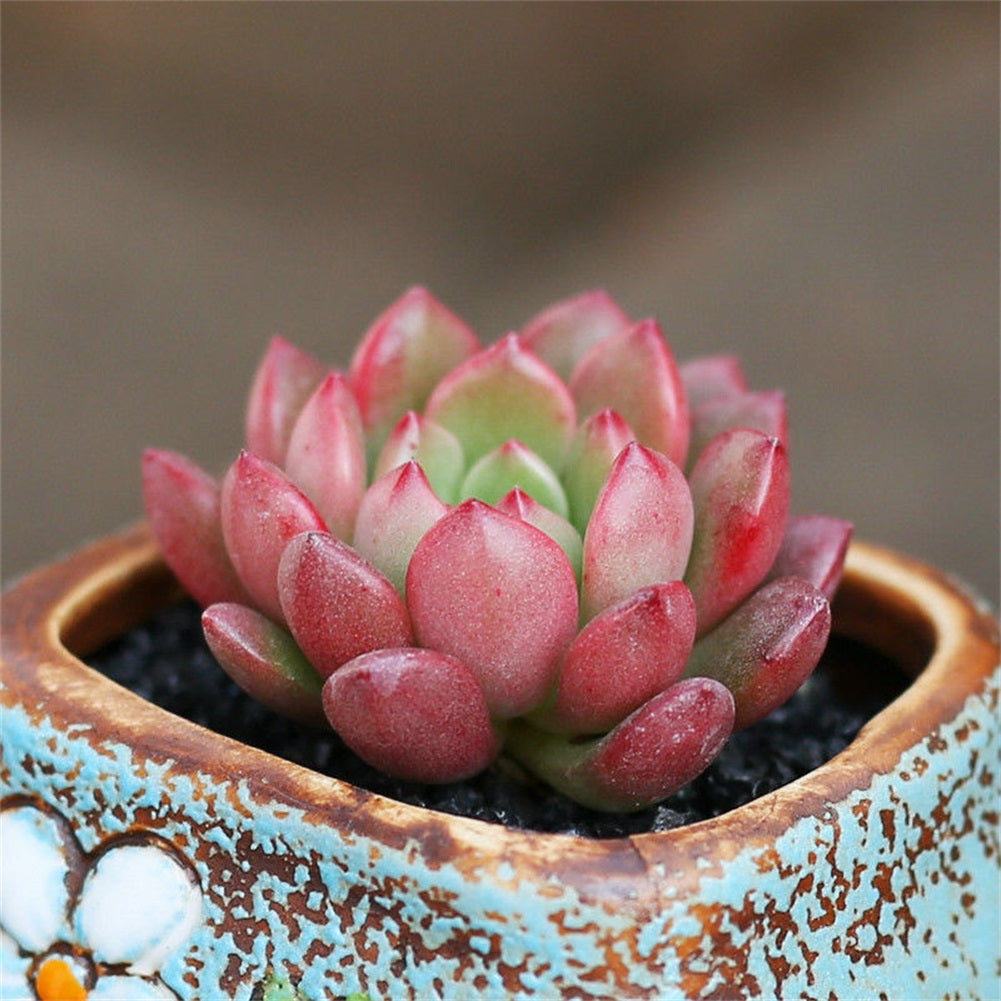Sedeveria pink ruby is a succulent plant resulting from a cross between the genera Sedum and Echeveria. Its leaves are slender and spoon-shaped, with thick and slanted tips, arranged closely in a rosette formation, giving it a compact appearance. The leaves of Sedeveria pink ruby are exceptionally smooth, making its colors, whether turning red in autumn and winter or green in summer, very eye-catching and aesthetically pleasing. It is a favorite among succulent enthusiasts, resembling a shining ruby in the fall, emitting a beautiful glow.
Sedeveria pink ruby thrives in environments with ample sunlight and cool, dry conditions, tolerating partial shade but avoiding waterlogging and humid, stuffy environments. It exhibits growth during cool seasons and dormancy during hot summers. The growth period of Sedeveria pink ruby extends from September to June of the following year (although the duration may vary depending on environmental factors). Insufficient light can cause the leaves to elongate and turn green, while plants grown in ample sunlight appear compact with closely arranged leaves.
Soil: The soil for Sedeveria pink ruby can be a mixture of coal cinder, peat, and a small amount of perlite, in a ratio of approximately 5:4:1.
Light: Sedeveria pink ruby requires full sunlight. The leaves of Sedeveria pink ruby have evident wrinkles and folds, which become redder under strong light or significant temperature fluctuations. In low light, the leaves turn green, elongate, and lighten in color. The smooth surface of Sedeveria pink ruby's leaves prevents water retention. The leaves have a slight white powder, and for vibrant leaf colors and a compact, attractive appearance, Sedeveria pink ruby requires abundant sunlight.
Temperature and Watering: During the growth period, Sedeveria pink ruby requires moist soil, avoiding waterlogging. It can withstand temperatures as low as around 4°C indoors, but if temperatures drop further, the growing tips of the leaves may suffer frost damage and dry up, leading to death. During the winter, watering should be reduced gradually, with a complete cessation of watering below 5°C. During periods of high summer temperatures, the plant's growth slows or halts entirely, necessitating good ventilation, partial shading, and controlled watering to prevent rot from prolonged rain.
Moisture: Sedeveria pink ruby prefers a humid environment, maintaining soil moisture for extended periods while avoiding waterlogging. During summer and dry seasons, it should be watered 1-2 times daily, with the leaves misted 2-3 times. However, watering should be moderate and not excessive, and prolonged rain should be avoided to prevent rot. It is best to keep the soil slightly moist but not waterlogged. During winter, watering should be significantly reduced, gradually stopping as temperatures reach -5°C.
Fertilization: During Sedeveria pink ruby's growth period, a diluted liquid fertilizer should be applied every 1-2 weeks. In winter, a diluted liquid fertilizer or compound fertilizer should be applied every 1-3 weeks.
Propagation: Sedeveria pink ruby can be propagated by division, leaf cuttings, or stem cuttings, except during extreme heat or cold.
Careful attention should be paid to Sedeveria pink ruby's care. Excessive heat and humidity can cause the entire plant to turn red or even black, while excessive shading can cause the leaves to turn green and elongate. Proper lighting conditions are crucial during the care process to ensure vibrant leaf colors and overall beauty.
